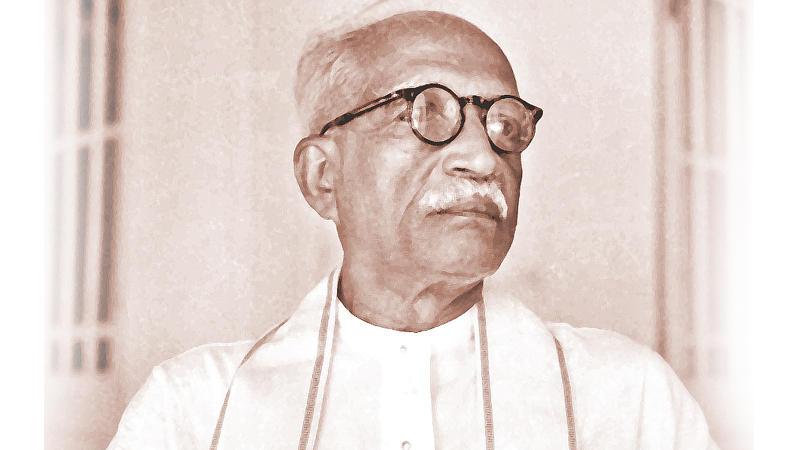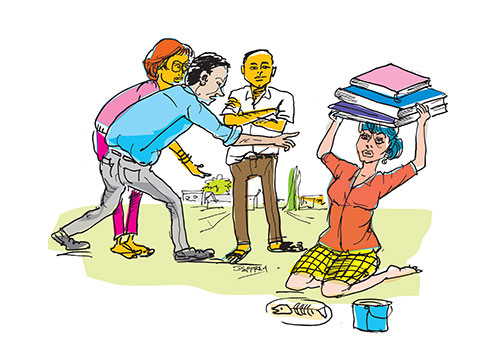by Sivamohan Sumathy
The Parliamentary Select Committee on Education recently released its report on its programme for reforms in general education and higher education. Headed by Dr. Wijedasa Rajapaksa, the more than 10-member committee only had two members who had had anything to do with higher education, namely, Drs. Harini Amarasuriya and Charitha Herath. Yet it has audaciously proposed sweeping and fundamental changes in education, particularly higher education. It is noteworthy that Dr. Amarasuriya refused to be a party to the report and released her own dissenting report, outlining her fundamental differences with its findings.
I will take on the report through a partial examination of two related areas; one the substantive issue of its ideological maneuvering of higher educational policy, and to a lesser extent, the question of funds. Since the late ’90s, government policy has generated a slow erosion of free university education. The groundwork for reforms was laid through a systematic hounding of the university, its members, and through a reviling of the politics of its student body. Blaming the universities, particularly the humanities and social science streams, for the purportedly high levels of unemployment among the educated youth, the government came up with a rhetoric undermining the state university system around the term “unemployable graduate.” Conversely, its rationale and justification for funding came to be dependent on universities losing their own sense of what education is, forcing them to kowtow to pressures brought on by government bodies. By hounding university teachers and students with humiliating accusations of not being able to meet the demands of the private sector and calling them free loaders, the government tried to sell the idea that the universities were a burden on tax payers and on the economy. In contrast, the corporate sector was painted in the image of a beneficent godfather. In the policies advocated, the corporate sector became the role model, both in content and in administrative imperatives in universities.
The introduction to the section on Higher Education lays out the ideological frame for the proposals. It starts off with value judgements, like “[Higher Education] is plagued with many issues, including limited accessibility, low quality and weak relevance, poor governance, poor managerial capacity and inadequate resources” and absurdities, like “According to the Asian Development Bank (2020), much of the research output of public universities is of low quality and of low relevance to national needs”. Seemingly profound statements like “University-industry research collaboration is also very low” say little, for they do not offer any background understanding of the nature of our sciences and arts education, and, most importantly, the nature of our industries! Do we have a thriving corporate sector to drive research led projects? Our corporate sector is undeveloped and can barely sustain itself. Far more fundamental questions need to be asked. Do we want our research to be dependent on a set of corrupt, unregulated corporate entities? Has not research, at the global level, demonstrated the acutely problematic nature of corporate funding? Again, how much does the state invest in Research and Development?
The Commission
The proposals seek a new University Act and recommends the abolishing of the University Grants Commission (UGC). In its place a “National Higher Education Commission” will be set up, with four distinct committees functioning under it, namely State Universities, Non-State Universities/Higher Educational Institutes, Vocational Universities/Institutes and Quality Assurance. The functions of the Commission bring the state university system and private higher educational institutes together. This marks a radical departure from what is in place today. With all its ills, the UGC gives coherence to the higher education system across universities and, far more importantly, gives coherence to the Free Education system, by facilitating and overseeing the admission of students who come through the A/Levels. By abolishing such a body, and replacing it with a Commission that governs both the state university system and the private higher educational sector, and advocating cooperation between the two, the lines between the two are blurred. Under this National Commission, the student body of the state university system may become a two-tiered entity: students who enter through the free educational system and students who will pay fees; students who gain admission through the A/Levels and students who have lateral entry. These moves will lead to high levels of corruption. Not only will this create enormous socio-political inequality within the system, but will also pave way for the dissolution of free higher education.
The proposals envision a far-reaching role for non-state higher institutes. They are presented as core players in offering education at all levels of higher education and are expected to play the major role in setting up new universities across the country. Underfunding the universities and channeling funds into schemes for students by which they can choose the university they want to attend, as proposed here, will further weaken the state university system. The proposals emphasize Private public partnerships – PPP–a buzz word beloved of neo liberal ideologues. Ostensibly, PPP is about the private sector’s support for public institutions. But in reality, PPP is about the use of public institutions and their resources to sustain private enterprises The policy document Expansion of Medical Education in Sri Lanka With the Participation of the Private Sector: Adopting the South Asian Institute of Technology and Medicine (SAITM) as a Model released in November 2016 spells out policy makers’ views on PPP. It can be clearly seen in this document how parasitic the private sector is on the public. Ramya Kumar’s” Public–private partnerships for universal health coverage? The future of “free health in Sri Lanka” is a must read in this regard. https://globalizationandhealth.biomedcentral.com/articles/10.1186/s12992-019-0522-6
Quality Assurance
As all those in the university system know, Quality Assurance (QA) is a contested normative framework. Its demands on the university system are ideological, for what it asks for in terms of quality is vague and extra-curricular, with little to do with the quality of education provided. QA is more about the management of education than education itself. It is about how well clerks are able to file letters in the filing cabinet. University teachers are being forced to spend an enormous amount of time writing those documents, so that they can be filed, and then be put on display as “evidence” of our compliance with the requirements of QA. QA does not in any way ensure quality, nor does it seek to ensure quality.
Quality in our world today is equated with corporate interests and research is understood to be in service to the corporate sector. QA instituted at the Commission will place state university education and private higher education on par, and make the objectives of the former subordinate to those of the latter, advocating uniformity, conformity, submission to authority and acquiescence.
Defunding State Universities out of existence
What rhetoric cannot achieve the government tries to extract through material means. State universities have been unimaginably underfunded in recent times. Funding is at an all-time low at present with 1.5% of the GDP. In turn, the government demands that universities generate funds, funds to be got at through establishing fee levying courses of all manner of quality. Underfunded and understaffed, particularly in the Humanities and Social Sciences, state universities are under immense pressure to engage in money making enterprises, via ramped up external degrees, certificate and diploma courses. At the moment, each of our faculties is busy finding ways to offer courses that can generate funds. Some faculties are exploring the possibility of admitting paying students at the undergraduate level.
The policies of the government range from attempts to delegitimize our curricula to flagrant underfunding of the universities.
Through systematic defunding, the path is being cleared for the take-over of higher education by the private sector and the privatization of state universities.
Undermining Democracy
In 2022, a mass uprising questioned the employability of our parliamentarians. Today, a bunch of uninformed parliamentarians, and an illegitimate government that has outlived its time by more than a year, are bringing about fundamental changes in an area that is one of the corner stones of the Sri Lankan socio-political map — Education, Higher Education and Free Education.
The country is in great economic stress. The cost of living rises daily, exponentially. Workers are facing a massive cut in opportunities for employment, while those in cultivation are confronted with depleting resources and decades-old erosion of their capacity to work. The proposals on education, if implemented, will dispossess the youth of this country of an education, exacerbating already existing social cleavages. This government and this Parliament have no political legitimacy to bring in such a sea change in policy. All those concerned must shout out to say NO!



